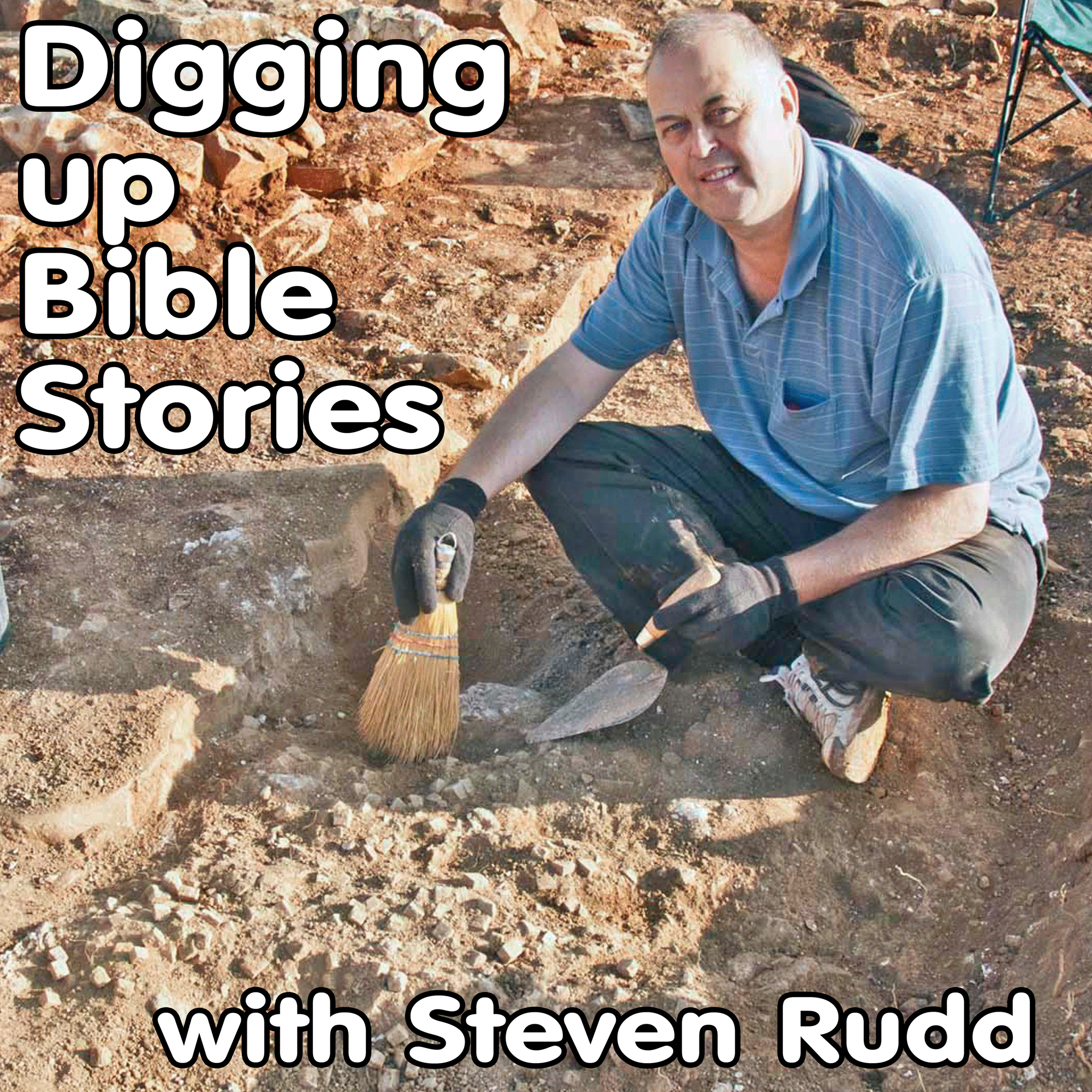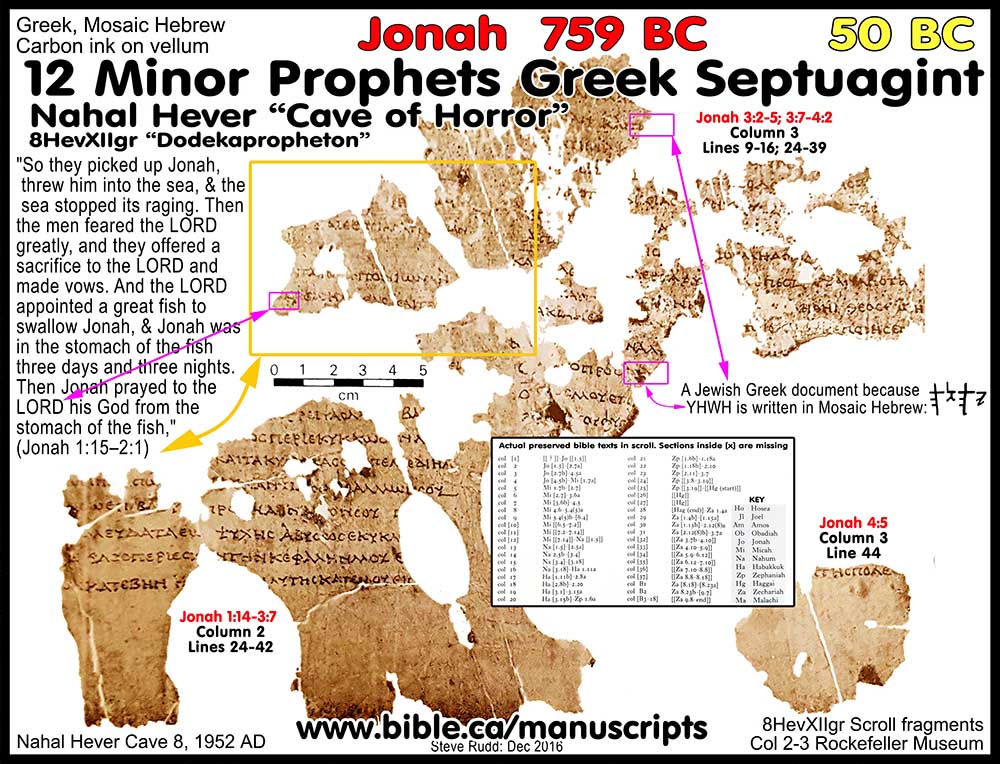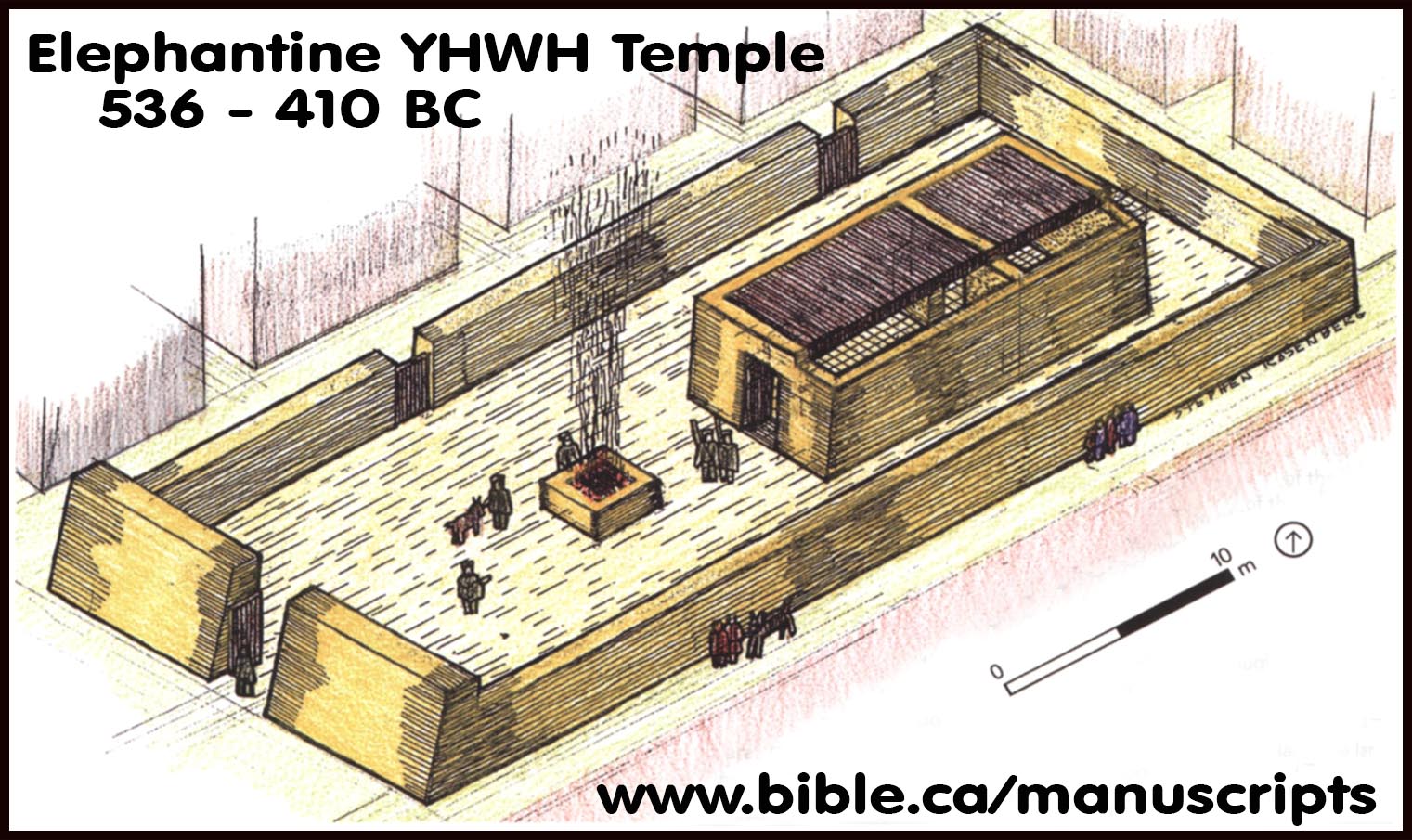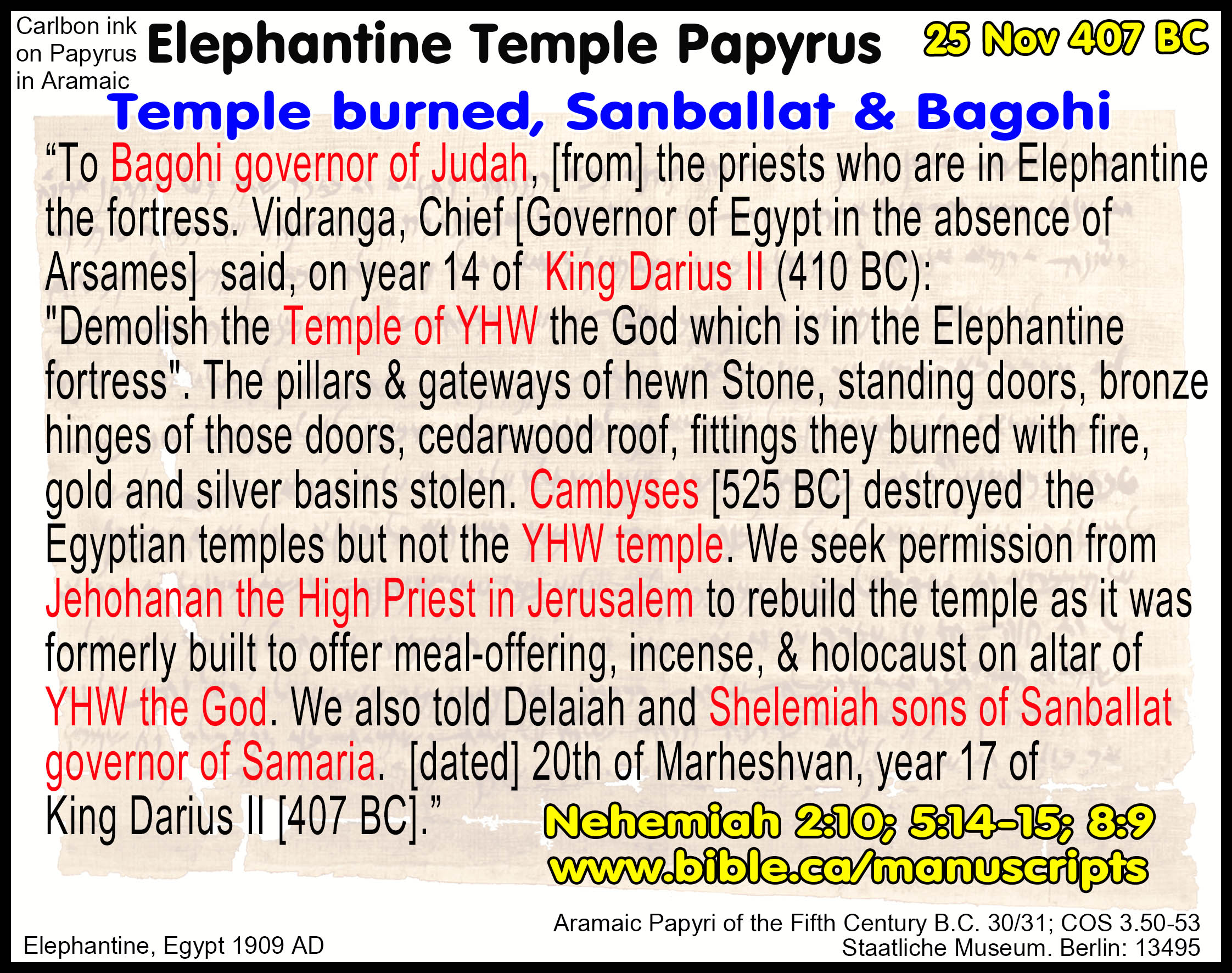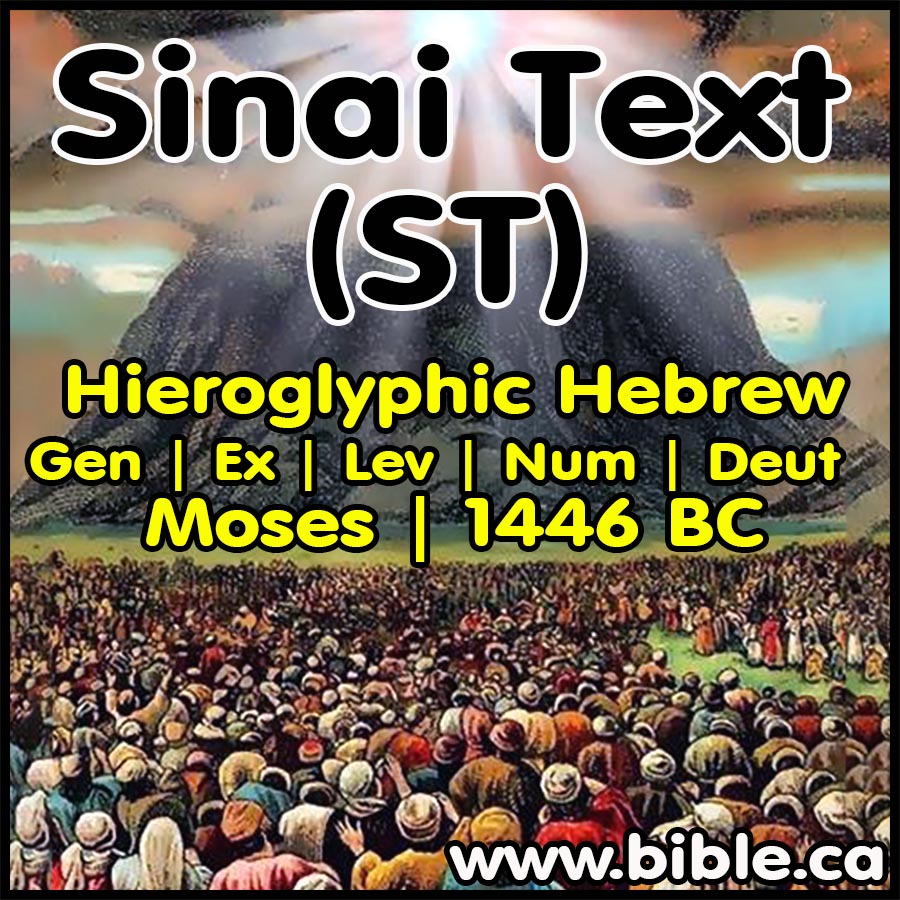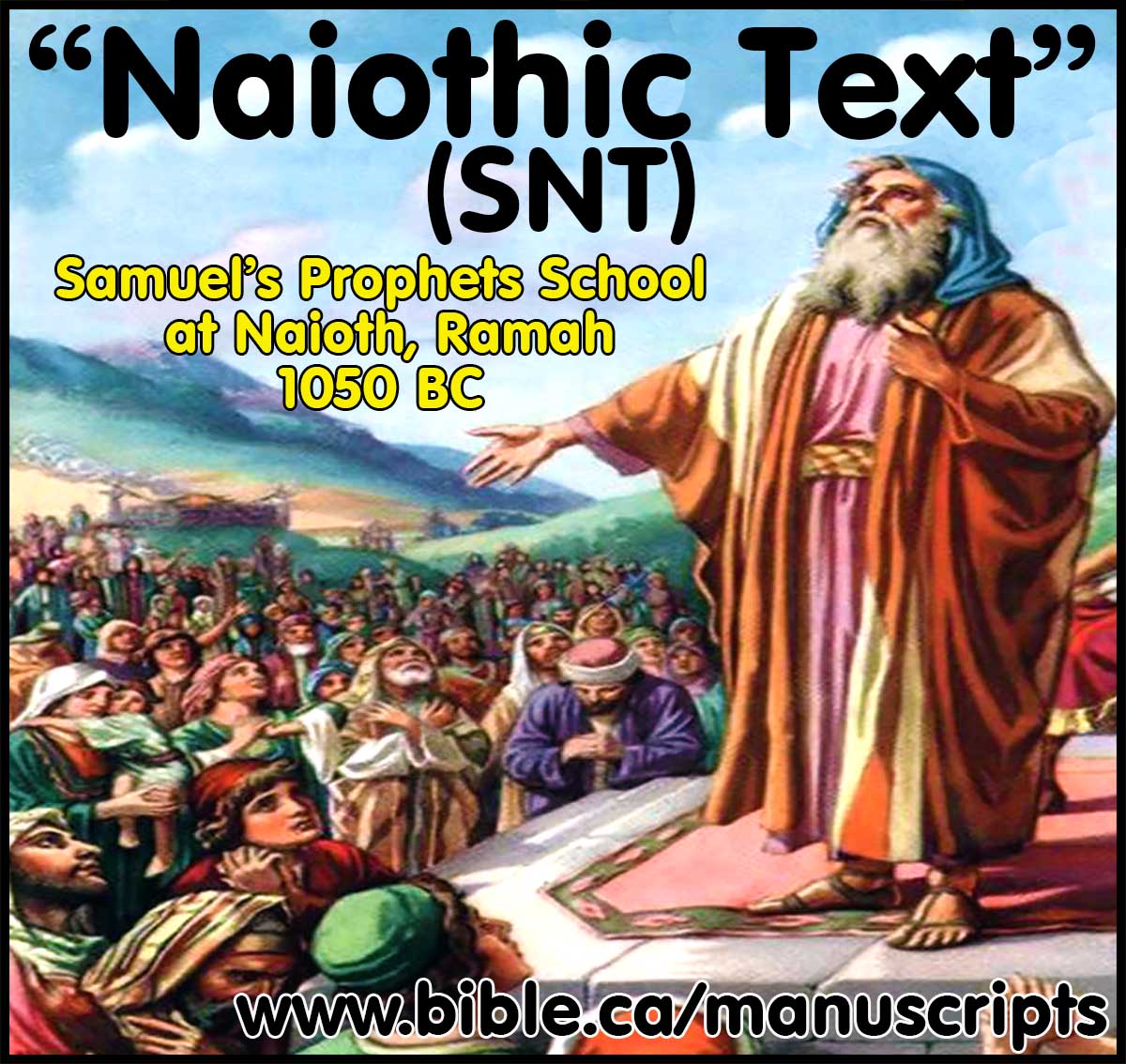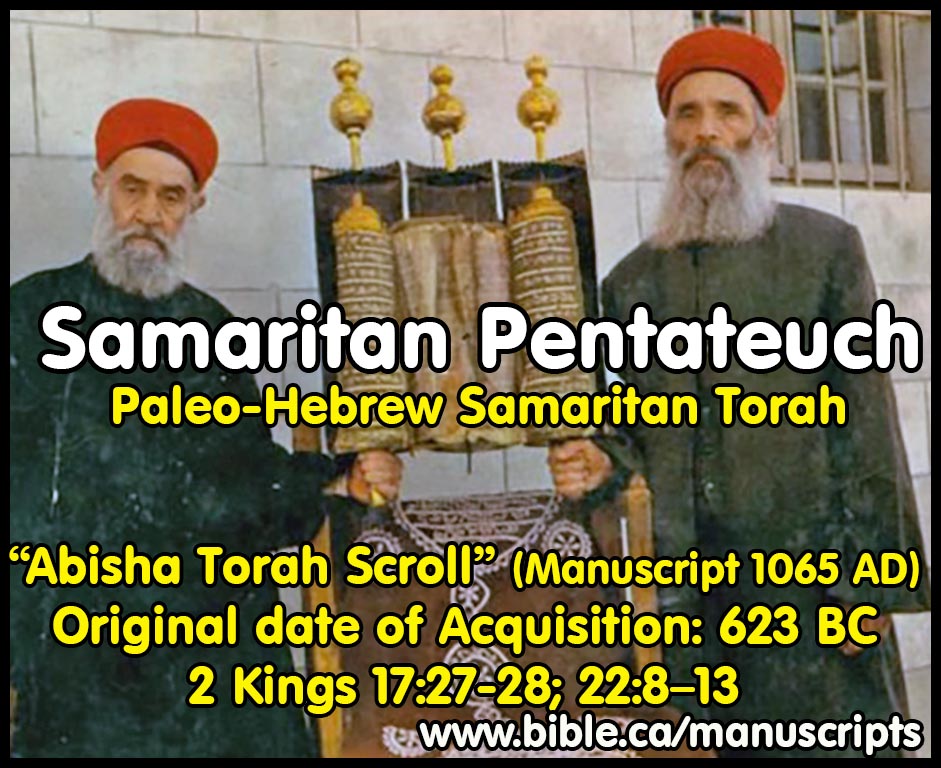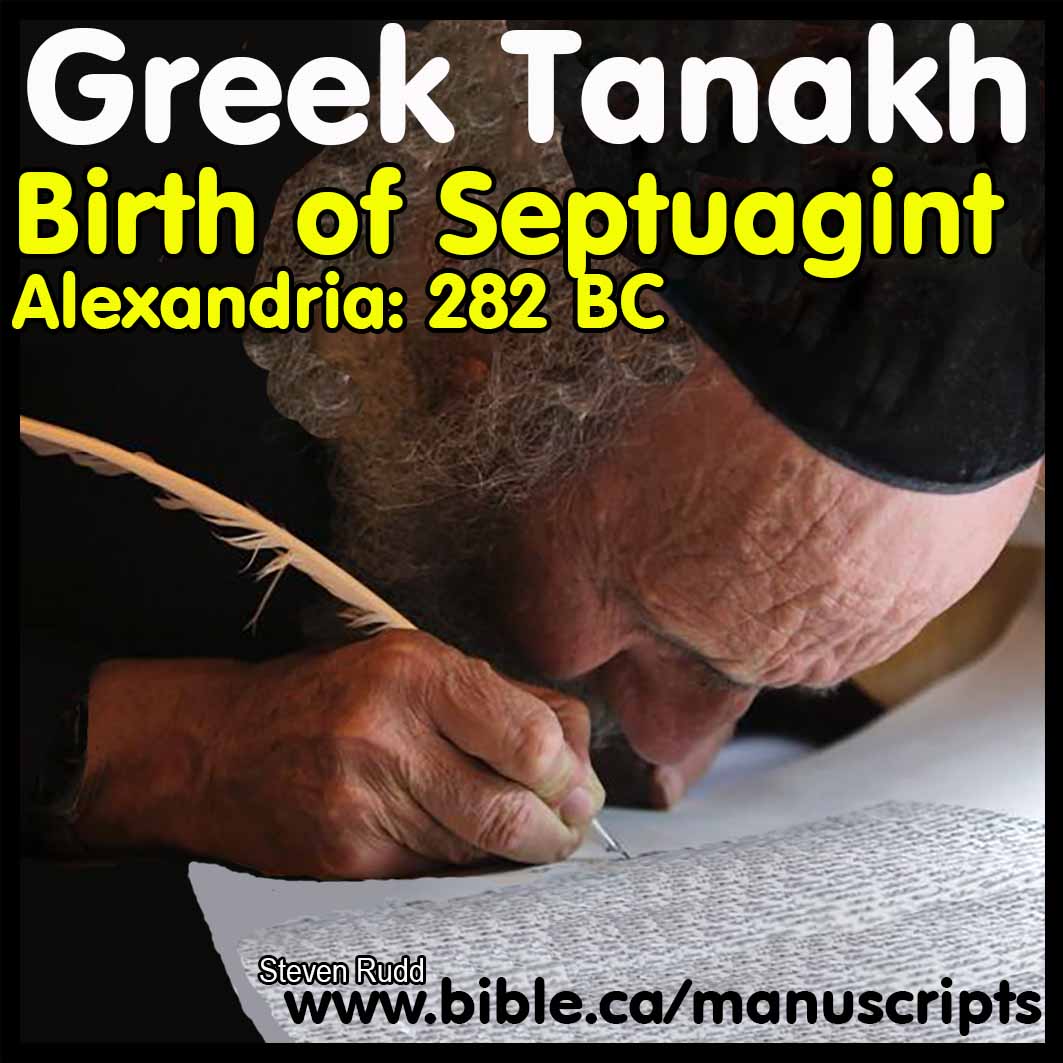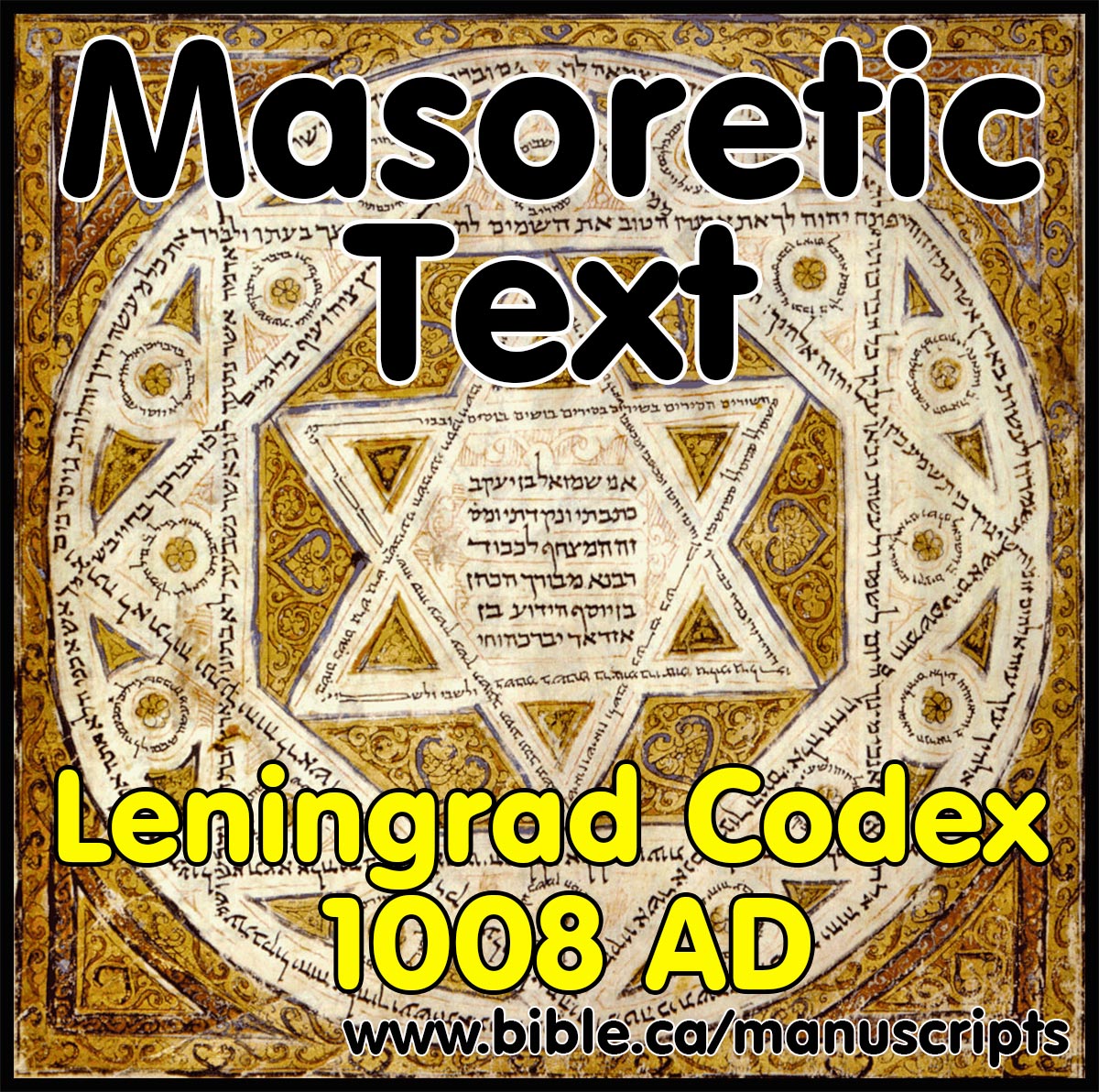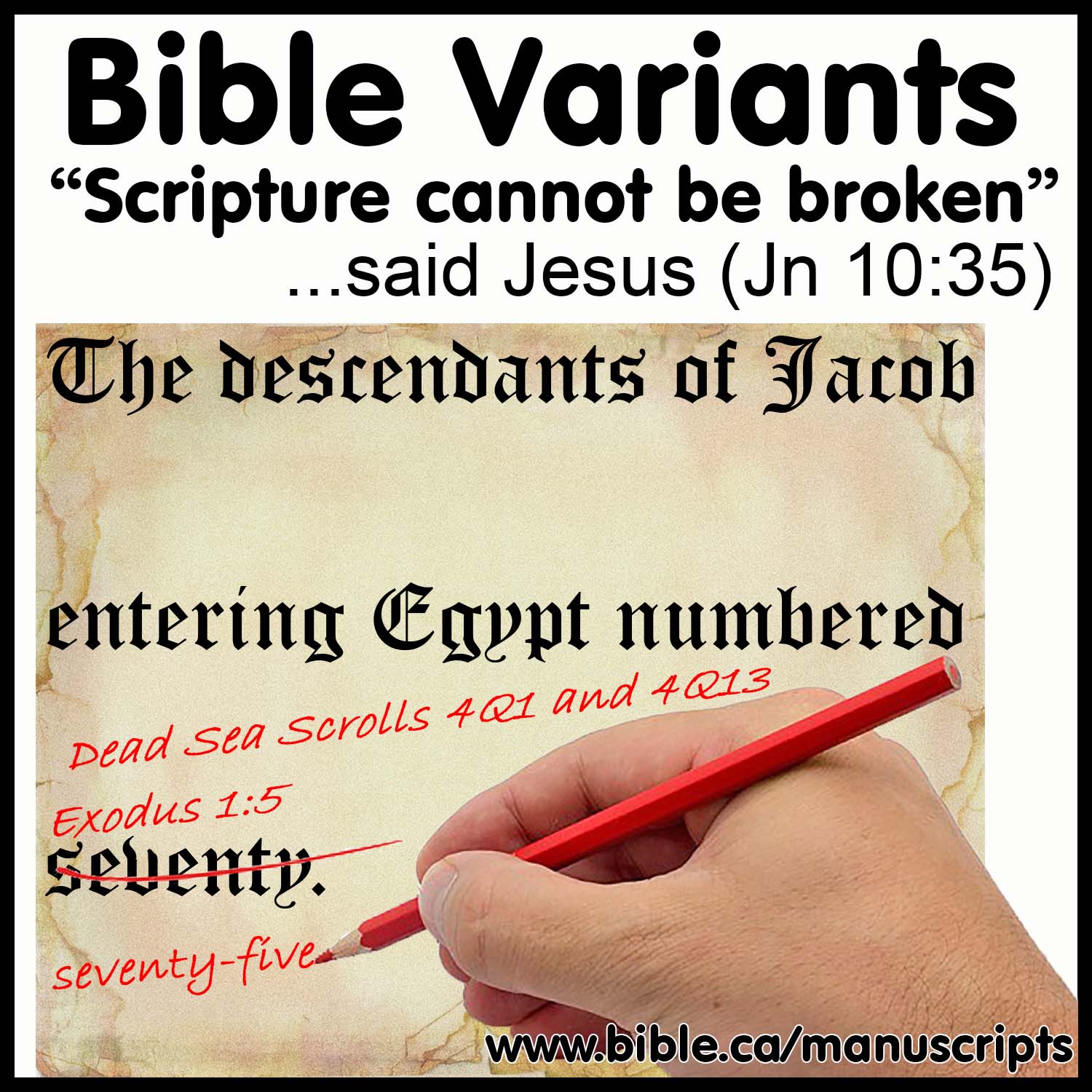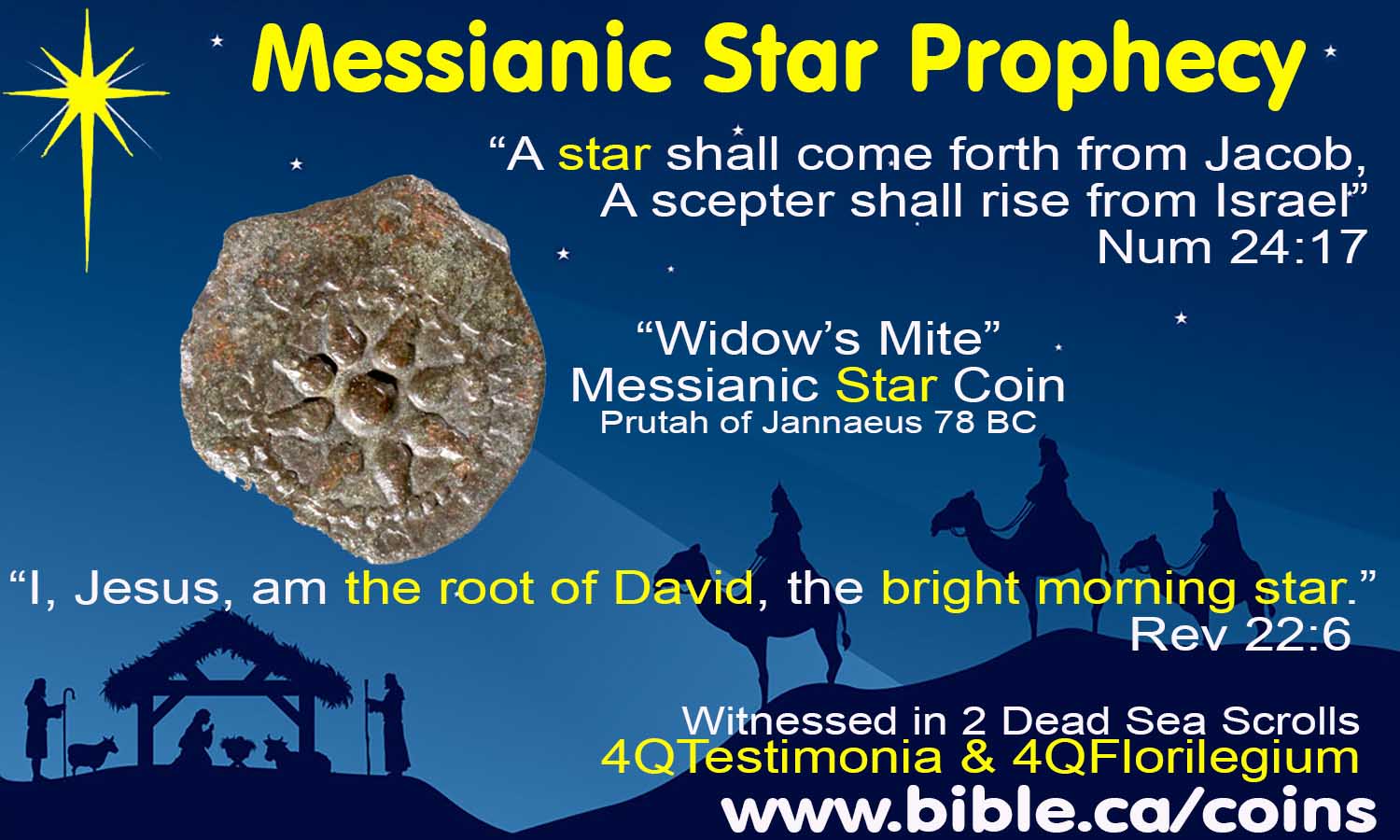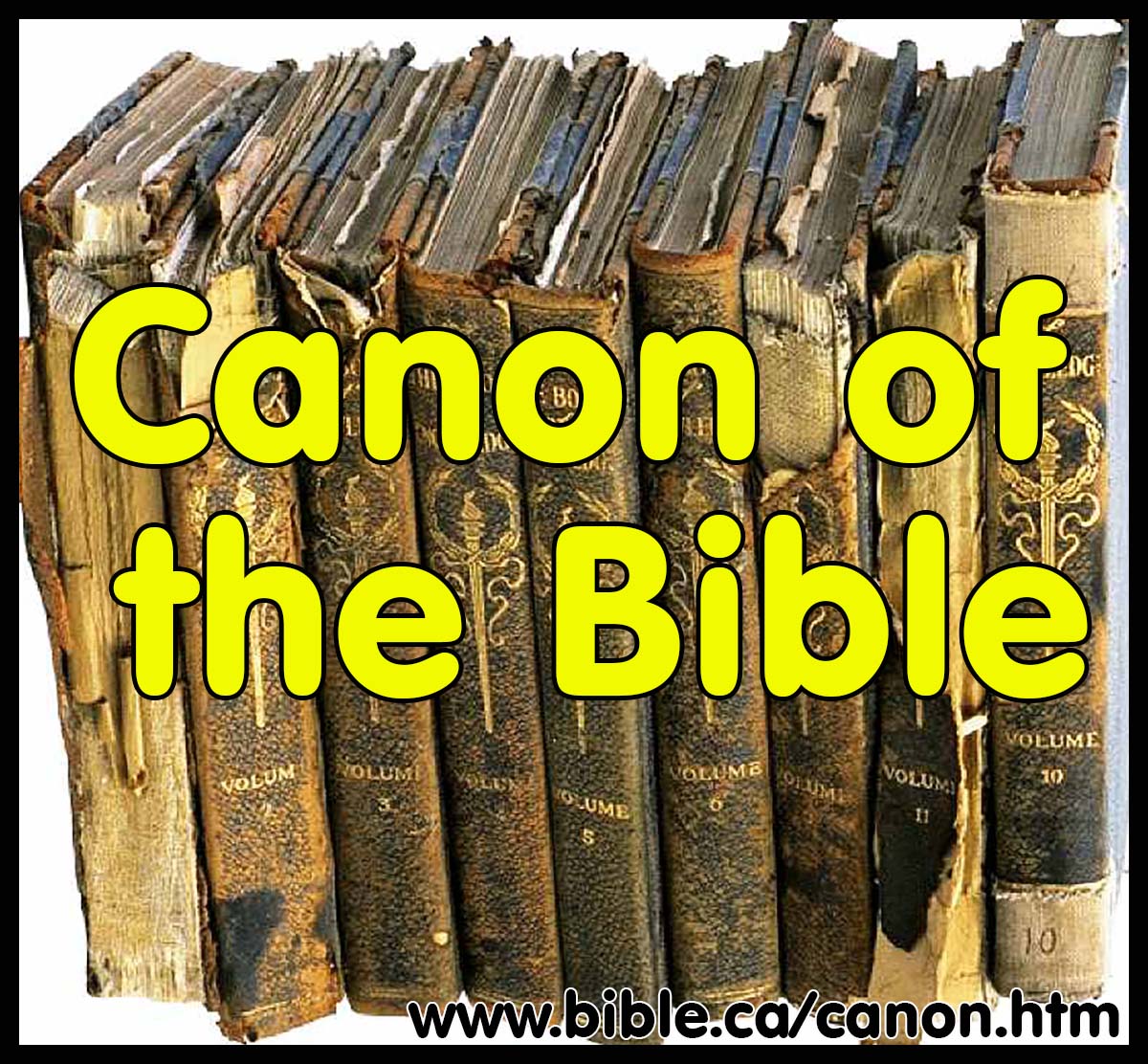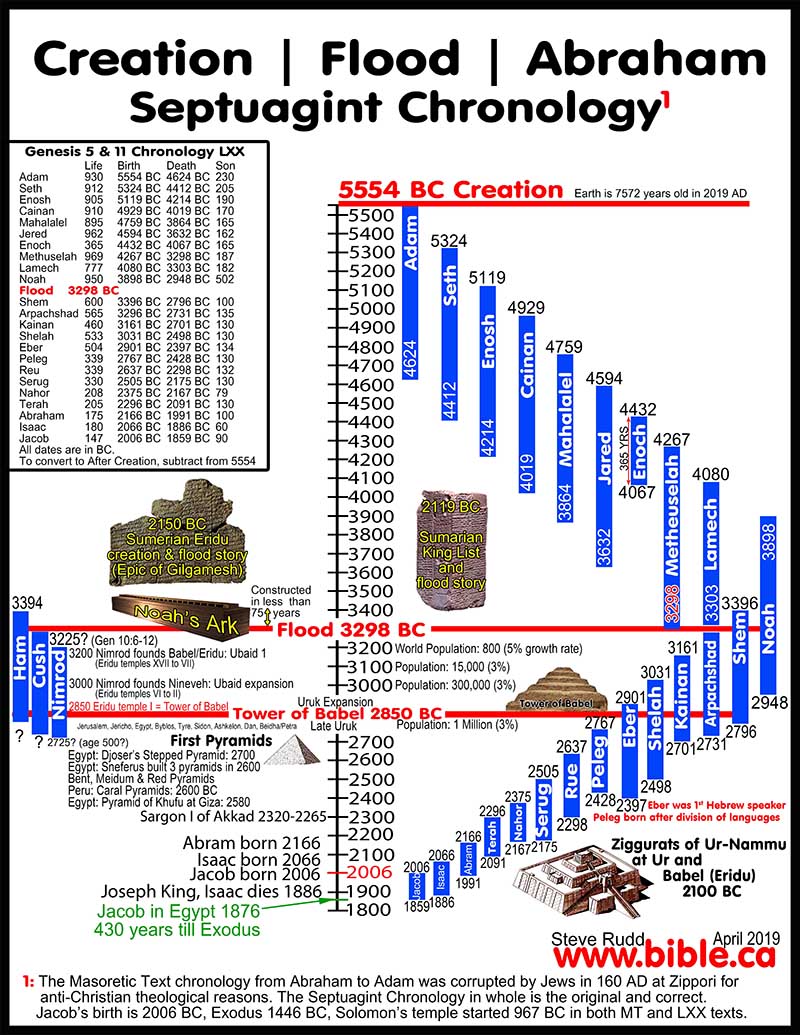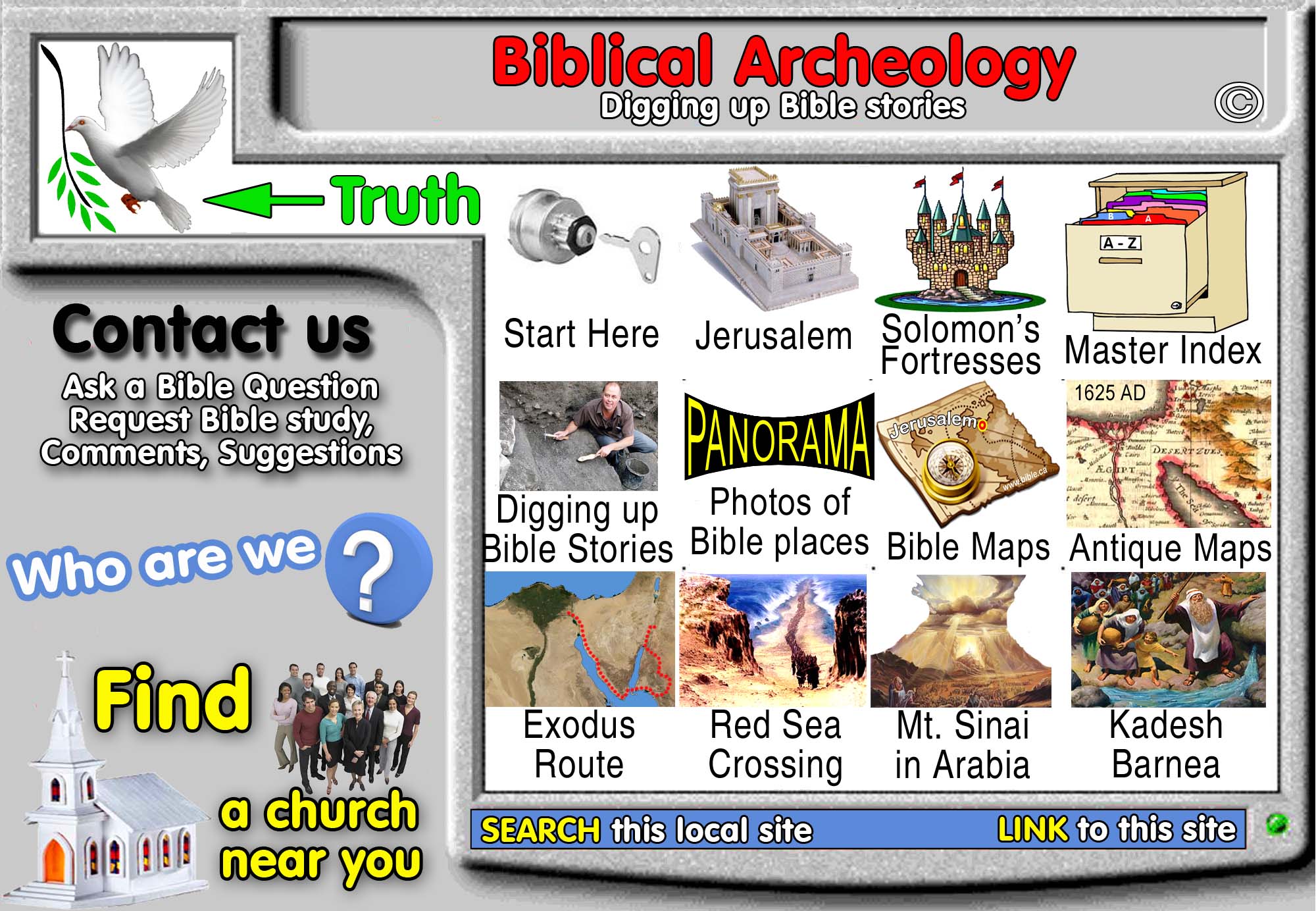|
Archeology of the Greek language at the Time of Jesus Christ |
|
The Greek Septuagint was Essential for Jewish worship SCRIPTURES | SYNAGOGUE INSCRIPTIONS | COINS | TOMBSTONES |
|
"Scripture cannot be broken" (Jesus, John 10:35) "My word will accomplish what I desire and succeed in the purpose for which I sent it." (Isa 55:11) Steve Rudd November 2017 |
Introduction:
1. For 300 years, the Greek Septuagint Bible was essential for Jewish life and worship:
a. The Greek Septuagint filled a huge gap in the general Jewish population in their thirst for the word of God.
b. In God’s providence, he provided for the world a translation of the holy scriptures into Greek in 282 BC
c. Hebrew was functionally extinct among the Jews so the Hebrew scriptures were only being used by the High priest and the Sadducees.
d. After the Babylonian Captivity of 605-536BC, the Jews used the Hebrew language less and less until the time of Alexander the Great when almost none of the Jews spoke Hebrew anymore.
e. Outside of Judea the Jews spoke Greek in their synagogues and used the Septuagint exclusively from 280 BC, hundreds of years before the time of Christ.
2. Every aspect of Jewish life at the time of Christ was Greek because Hebrew was extinct among the general population
a. Greek Bible (Septuagint) in thousands of synagogues inside Judea and diaspora
b. Greek synagogue inscriptions
c. Greek money and coins
d. Greek funeral markers and grave stones.
3. Working languages at the time of Christ: 30 AD:
|
Working languages at the time of Christ: 30 AD |
|||
|
Default working language |
Other languages spoken |
Language of worship |
|
|
Jesus Christ |
Aramaic Syriac |
Greek, Aramaic Hebrew |
Septuagint (Galilee) |
|
Jews in Canaan |
Aramaic Syriac |
Greek |
Septuagint |
|
Jews outside Canaan |
Greek |
Aramaic Syriac |
Septuagint |
|
High Priest: Temple, Jerusalem |
Aramaic Hebrew |
Greek, Aramaic Syriac |
Aramaic Hebrew (Masoretic) |
|
Romans |
Greek |
Latin |
Septuagint |
4. With the extinction of Hebrew the Jews in Judea used Aramaic and Greek:
a. Aramaic was the default language of Jewish home life and the dinner table.
b. Greek was the language of worship and commerce.
c.
See also: The extinction
of the Hebrew language

I. Greek was the language of Jewish worship: Scripture and synagogues
- Greek Septuagint used in all Jewish Synagogues as standard text:
- "Finally, it should be noted that the LXX translation functioned as a praeparatio evangelica for the first mission and expansion of early Christianity. When Paul went round the synagogues of Asia Minor proclaiming the gospel, besides Jews he met among his listeners many proselytes (Acts 2:10; 6:5 and 13:43) already converted to Jewish monotheism, probably through reading the LXX in the synagogue." (The Septuagint in Context: Introduction to the Greek Version of the Bible, Marcos, N. Fernández, p323, 2000 AD)
- Septuagint Greek scroll of the Greek Twelve Minor Prophets written in 50 BC: Dating to 50 BC, this is a Greek (Septuagint) translation of the 12 minor prophets by Jews before Christ was born. This proves that the Entire Old Testament (Tanakh) was translated into Greek before the Christian Era. The text reads essentially the same as the modern text we use (Masoretic) proving the Bible has not been lost, altered or corrupted over time. YHWH is written in Mosaic Hebrew as the name of God.
|
Read full outline and see 5 ultra high resolution plates of the scroll. |
- Jewish Synagogue prayers "Shema" conducted in Greek at the time of Christ:
- "Given the pervasive influence of the surrounding environs, each community responded in its own way. Synagogues located in large cities were often largely influenced by their neighbors’ cultures. In Caesarea, for instance, all the inscriptions found in the one known synagogue building were in Greek (with the exception of one word, ‘Shalom’), and the biblical quotations were taken from the Septuagint. (This conforms with the above-mentioned tradition discussing that community’s recitation of the Shema‘ prayer in Greek.)" (The Revolutionary Effects of Archaeology on the Study of Jewish History: The Case of the Ancient Synagogue, L. I. Levine, The archaeology of Israel: Constructing the Past, Interpreting the Present, N. A. Silberman & D. Small, Vol. 237, p181, 1997 AD)
2. The Greek Septuagint and the rise of synagogues are directly connected
a. In 282 BC the Septuagint (LXX) was a translation of the Hebrew scriptures into Greek.
b. As spiritually starved Jews around the world received copies of the new Greek Torah, then the entire Tanakh, they began to gather every Sabbath to read and pray and the synagogue movement was born.
c. Think of the Septuagint as “synagogue seed”: Everywhere it was distributed and planted around the world a synagogue grew.
d.
See also: the Origin of
Synagogues in Alexandria in 282 BC
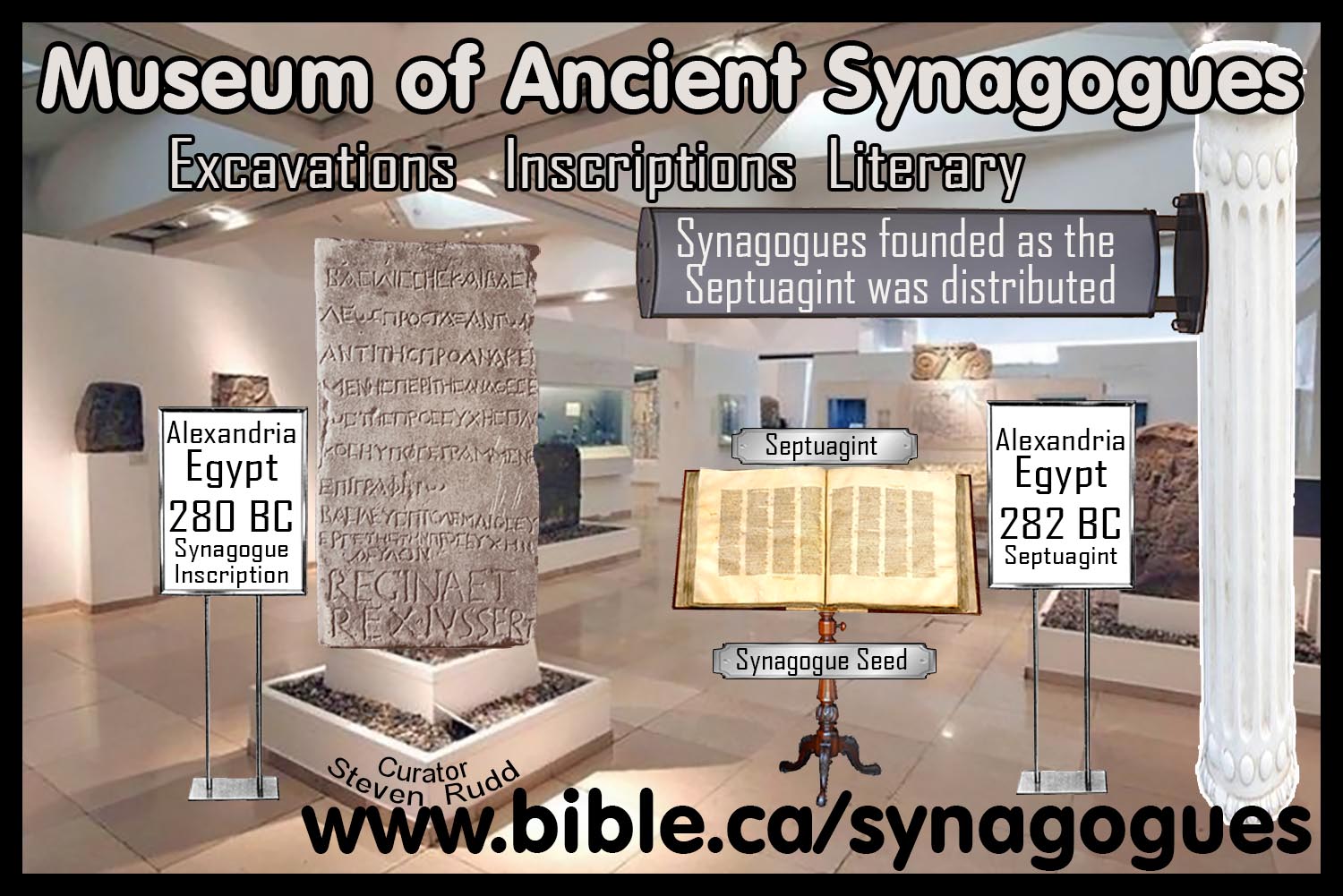
- Large number of Greek speaking synagogues in each city:
- There were almost 500 synagogues
in Jerusalem alone at the time of Christ:
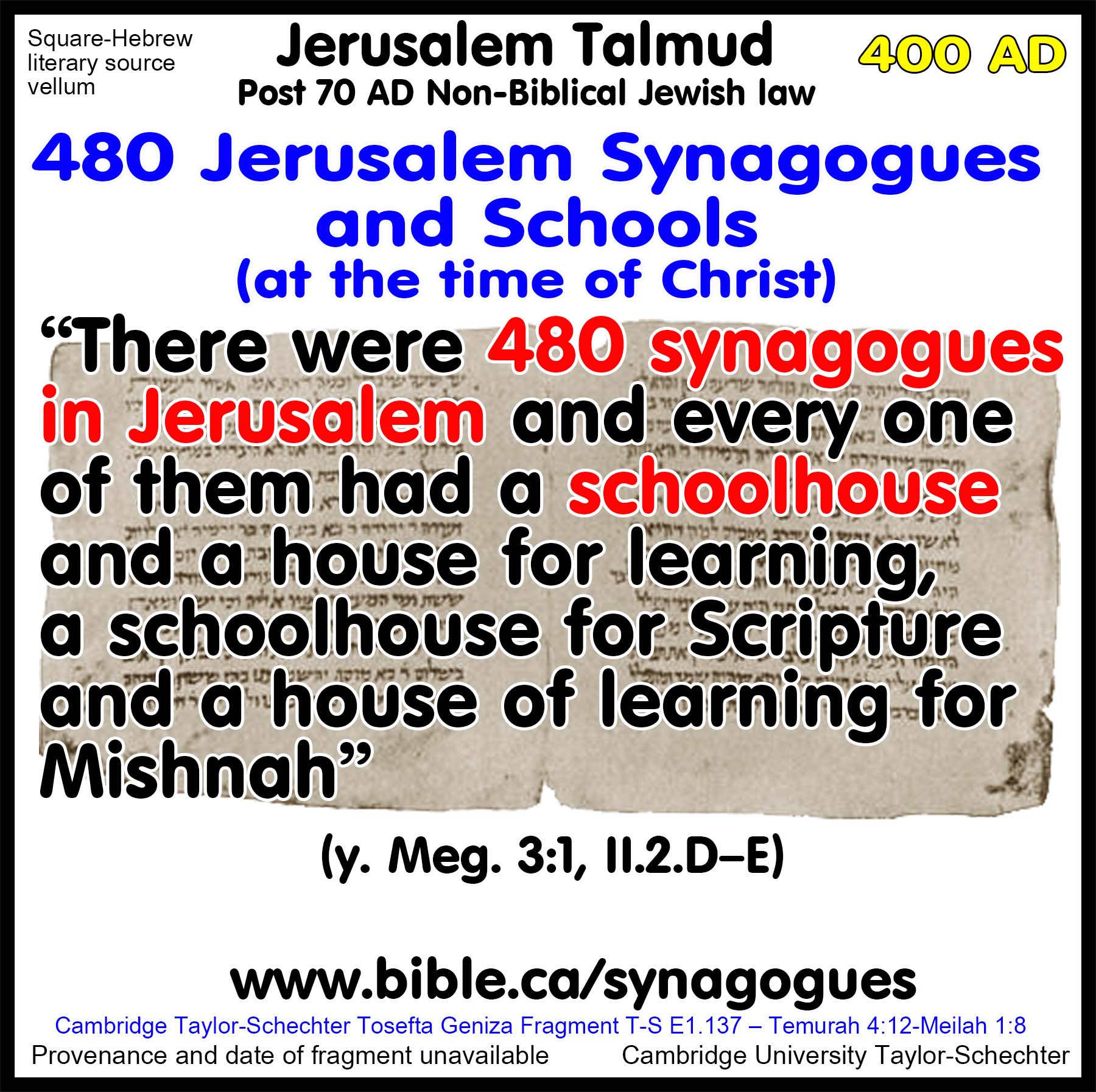
- Alexandria, Egypt had many Synagogues: "But as the governor of the country, who by himself could, if he had chosen to do so, have put down the violence of the multitude in a single hour, pretended not to see what he did see, and not to hear what he did hear, but allowed the mob to carry on the war against our people without any restraint, and threw our former state of tranquillity into confusion, the populace being excited still more, proceeded onwards to still more shameless and more audacious designs and treachery, and, arraying very numerous companies, cut down some of the synagogues (and there are a great many in every section of the city), and some they razed to the very foundations, and into some they threw fire and burnt them, in their insane madness and frenzy, without caring for the neighbouring houses; for there is nothing more rapid than fire, when it lays hold of fuel." (Philo, Embassy 132, 38 AD)
II. Greek Synagogue Inscriptions before 70 AD (Second Temple period):
|
Synagogues before 70 AD Archeological top plan of Greek language Synagogues |
||
|
Date |
Location |
Archeological top plan |
|
250 BC |
Delos |
|
|
132 BC |
Modein |
|
|
90 BC |
Qiryat Sefer |
|
|
78 BC |
Gush Halav |
|
|
78 BC |
Masada |
|
|
76 BC |
Gamla |
|
|
75 BC |
Jericho |
|
|
50 BC |
Magdala |
|
|
50 BC |
Migdol |
|
|
50 AD |
Ostia |
|
|
66 AD |
Herodium |
|
- Archeologically, from the Greek inscriptions, it can be shown that all the Jewish synagogues outside Judea not only used the Septuagint (LXX) but likely didn't even know how to speak their native Hebrew. Even within Judea 80% were Greek:
- "The evidence of Greco-Roman influence there is overwhelming—the architecture of many catacomb facades, the impressive funerary monuments, the extensive art remains, and especially the inscriptions, almost 80% of which are in Greek. Soon after these discoveries, and at least in part because of them, S. Lieberman published his seminal and monumental Greek in Jewish Palestine, a pioneering work demonstrating the degree of penetration of Greek language and culture into Jewish life generally and among the rabbis in particular." (The Revolutionary Effects of Archaeology on the Study of Jewish History: The Case of the Ancient Synagogue, L. I. Levine, The archaeology of Israel: Constructing the Past, Interpreting the Present, N. A. Silberman & D. Small, Vol. 237, p181, 1997 AD)
- Another study found that only 12% of Judean synagogue inscriptions were in Hebrew: "A recent survey [1970's] of Palestinian synagogue inscriptions revealed that 67 were in Greek, 54 were in Aramaic and 14 in Hebrew. Most of the Greek inscriptions were found in the coastal and important inland cities." (Caesarea under Roman rule, Lee Levine, Chapter 5, footnote 126, p198, 1975 AD)
- "The large quantity of archaeological finds relating to ancient synagogues is an important factor in any discussion of Hellenization and its effects in late antiquity. There is no aspect of the material remains of this institution which does not reflect some form or degree of interaction with the surrounding world. The very shapes and forms of most synagogue buildings were clearly borrowed from Roman models. The Galilean-type synagogue seems to have been adapted either from nearby Nabatean temple courtyards (theaters) or Roman basilicas. The large facades of these Galilean buildings which faced Jerusalem were typical of Roman facades on buildings, funerary monuments, or triumphal arches. The degree to which synagogues resembled Roman buildings is vividly reflected in a rabbinic discussion of a person who passed a pagan temple and, thinking it was a synagogue, proceeded to bow down before it. The very fact that the rabbis would invoke such an instance as a basis for a halakhic discussion indicates that such a reality was indeed a familiar phenomenon. Moreover, the basilica-like synagogues of the later Byzantine period likewise reflected the surrounding culture; in this case the model seems to have been contemporary churches. An architectural plan, which included an atrium, narthex, and sanctuary consisting of a nave and side aisles separated by two rows of columns, in addition to a chancel screen, seems to have been adopted by the Jews from Christian models. The same holds true with respect to the artistic depictions in these synagogues. Influence seems to have been a constant with the only variables being its extent and nature. On the one hand, depictions such as the zodiac and Helios, or a mosaic pattern of vine tendrils flowing from an amphora and forming medallions or representations of animals, fish, baskets, and assorted geometric shapes, are frequently used patterns borrowed directly from the surrounding Byzantine world. Even distinctly Jewish symbols, such as the Torah shrine, menorah, and shofar, were influenced by contemporary models and patterns. Stone moldings, which predominate in the art of the Galilean and Golan buildings, were clearly borrowed from traditions of Roman art in evidence throughout the eastern Mediterranean in late antiquity. Finally, the use of Aramaic and Greek, both lingua franca in the Roman East, in over 90% of the synagogue inscriptions in Palestine, bears testimony to the impact of the surrounding world. Many of the names of donors, particularly those in Greek, as well as the formulae invoked in many Greek inscriptions, were likewise borrowed from outside usage. There is certainly justification in assuming that this influence was not confined only to externalities. The introduction of piyyut into the liturgy was parallel to and perhaps even influenced by similar developments in the Byzantine church. One rabbinic tradition reports that in at least one fourth-century synagogue of Caesarea Jews did not know enough Hebrew to recite the basic Shema‘ prayer in the original Hebrew, but rather did so in Greek. One can assume that most, it not all, of the prayer service in that particular synagogue was in Greek, and this would have undoubtedly included the Torah-reading and sermon. Even the gradual transformation throughout late antiquity of the synagogue into a primarily religious institution with a very distinct holy dimension parallels more general lines of development in that society. By the late Byzantine period, synagogue orientation towards Jerusalem was much more definitive, Jewish religious symbols were far more prominent, inscriptions bore the words ‘holy place’, and the building was referred to as a ‘miniature temple’ or viewed as a modest substitute for the Jerusalem Temple." (The Revolutionary Effects of Archaeology on the Study of Jewish History: The Case of the Ancient Synagogue, L. I. Levine, The archaeology of Israel: Constructing the Past, Interpreting the Present, N. A. Silberman & D. Small, Vol. 237, p181, 1997 AD)
- The earliest synagogue inscriptions are in Greek: Schedia, near Alexandria in Egypt
- See also: Detailed outline on the Schedia inscription
- “The first archeological evidence for a synagogue appears in Schedia, near Alexandria in Egypt, in the third century bce. Although no synagogues are clearly attested during the period of Ezra and Nehemiah (late fifth and early fourth centuries bce), the tradition traces the practice of translating Scripture from Hebrew into Aramaic during a public reading to Ezra’s reading of the Torah to the people of Jerusalem (Nehemiah 8; b. B. Qam. 82a; Ber. 33a; Meg. 17b). According to Neh 8:7*, the Levites helped the people to understand the Torah by interpreting or giving meaning to the words.” (Zephaniah, M. A. Sweeney, p30, Targum Zephaniah 2003 AD)
- “Of the other synagogue inscriptions found in Egypt, no. 1440 from Schedia (modern Kafr el-Dawar), not far from Alexandria, records the dedication of a proseuche built by “the Jews” in honor of “King Ptolemy (III Euergetes) and Queen Berenice his sister and wife and their children.” This inscription, and one from Crocodilopolis with the same kind of dedication (1532A), are the oldest synagogue inscriptions in existence, dating from between 246–221 b.c.e.” (ABD, Vol 1, p155, Alexandria)
- Inscription discovered in 1902 AD, 20 kilometers from Alexandria: "A marble slab found near Alexandria bears an inscription [Greek] dedicating a synagogue to Ptolemy III (Euergetes), who ruled Egypt from 246–221 B.C., and his queen Berenice." (Nelson’s new illustrated Bible dictionary, Synagogue, origin, 1995 AD)
- Here is one of the oldest synagogue inscriptions in the world from Schedia Egypt dating to 240 BC and of course it is in Greek. Schedia inscription in Alexandria Museum 37 x 29 cm. Photo of inscription in: (R. P. Jean-Baptiste Frey, ed., CIJ: Corpus Inscriptionum Judaicarum, II [1952], number 1440) (see also: Jewish Inscriptions of Graeco-Roman Egypt: JIGRE #22) “On behalf of King Ptolemy and Queen Berenice his sister and wife and their children, the Jews (dedicated) the Synagogue [Literally: proseuche].
- See also: Detailed
outline on the Schedia inscription

- The Jerusalem Greek Theodotus Synagogue Inscription from the time of Jesus Christ:
- See detailed outline on the Greek Theodotus Synagogue Inscription in Jerusalem
- Dating before Christ to the time of Herod the Great, the ten line Greek Theodotus Synagogue Inscription was found in Jerusalem and dates to before. What is amazing, is that this Greek inscription evidences that the "reading of the Law and for the study of the precept" was probably from the Greek Septuagint!
- The inscription dates to the exact same time that Herod the Great completed the Jerusalem temple.
- Translated Greek inscription reads: "Theodotos, son of [or: of the family of] Vettenos, a priest and head of the synagogue, son of the head of the synagogue, who was also the son of the head of the synagogue, [re]built the synagogue for the reading of the Law and for the study of the precepts, as well as the hospice and the chambers and the bathing-establishment, for lodging those who need them, from abroad; it (the synagogue) was founded by his ancestors and the elders and Simonides." (Theodotus Synagogue Inscription, 18 BC)
- See detailed outline on the Greek
Theodotus Synagogue Inscription in Jerusalem
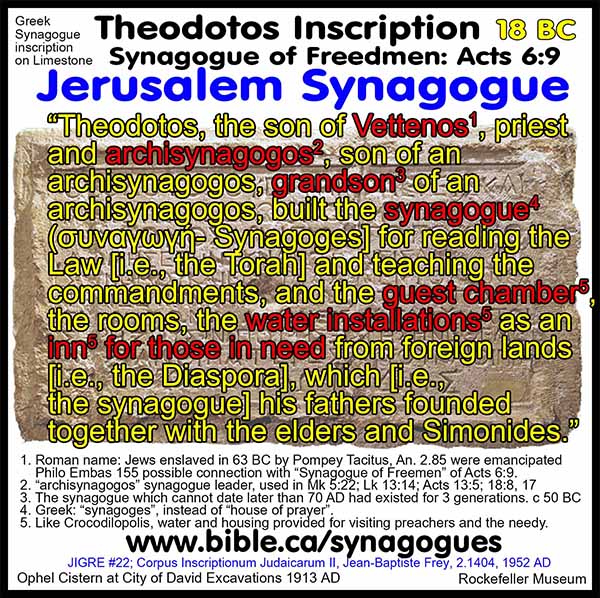
III. Greek Money, Coins and Weight stones inscriptions at the time of Christ:
1. Greek was the language of the marketplace as early as 300 BC:
a. Beginning in the Greek period, there existed a group of public officials known in Greek as agoranomoi (agora-nomos, singular) who supervised the commercial aspects of the market (agora), including the assurance of the true nature of balance weights. Some of these officials are named specifically on weights from the Hellenistic to the Roman periods. (Guide to Biblical Coins, David Hendin, 5th edition, p73, 2010 AD)
- Add to this the fact that even the Jewish limestone weight stones from Late Hellenistic/Early Roman period (100 BC - 50 AD) were mostly in Greek and occasionally in Aramaic, as witnessed in the weight stones discovered in the famous Aramaic limestone weight stone found in the Jerusalem "Burnt house". (ABD, Alexandria)
- Weight stones of Herod the Great (Matthew 2) that date back to 41 BC are important indicators of the native language in use at the time.
- Herod the Great reigned from 39-1BC and he killed all the children of Bethlehem under age 2 years old.
- Inscriptions on Herod the Great’s
weigh stones are exclusively in Greek: “Herod was
the first Jewish ruler to use exclusively Greek inscriptions on his coins.”
(Guide to Biblical Coins, David Hendin, 5th edition, p236, 2010 AD)

- Weigh stones of King Agrippa I (Acts 12)
- Agrippa I reigned 37-43 AD is most famous for killing James the brother of John, throwing Peter into prison and then being eaten by worms in Acts 12.
- Agrippa manufactured weight stones in 41 AD in Greek language.

- bible-coins-history-money-weight-stones-Greek-Year-5-of-King-Agrippa-supervision-Athamas-cylindrical-limestone-Jerusalem-41AD.jpg
- Coins were almost exclusively in Greek from the time of Herod the Great (59 BC) down to the destruction of the temple in 70 AD:
- “Most city coins of ancient Israel carry Greek rather than Latin inscriptions, evidence that Greek was still spoken in the area at this time.” (Guide to Biblical Coins, David Hendin, 5th edition, p60, 2010 AD)
- “As in Palestine, in Egypt too, Greek coins were in use, and were apparently very common as early as the end of the sixth century BCE.” (Guide to Biblical Coins, David Hendin, 5th edition, p70, 2010 AD)
IV. Greek and Aramaic Funerary inscriptions from tombs and ossuaries:
- Jewish
Greek inscriptions on tombstones in Greece:

- The famous
"Ossuary of James, son of Joseph, brother of Jesus" inscription
is in Aramaic not Hebrew.

- "No less than 1,600 Jewish epitaphs—funerary inscriptions—are extant from ancient Palestine and the Diaspora dating to the Hellenistic and Roman-Byzantine periods (300 B.C.E.–500 C.E.). … One of the most surprising facts about these funerary inscriptions is that most of them are in Greek—approximately 70 percent; about 12 percent are in Latin, and only 18 percent are in Hebrew or Aramaic. These figures are even more instructive if we break them down between Palestine and the Diaspora. Naturally in Palestine we would expect more Hebrew and Aramaic and less Greek. This is true but not to any great extent. Even in Palestine approximately two-thirds of these inscriptions are in Greek. Apparently for a great part of the Jewish population the daily language was Greek, even in Palestine. This is impressive testimony to the impact of Hellenistic culture on Jews in their mother country, to say nothing of the Diaspora. In Jerusalem itself about 40 percent of the Jewish inscriptions from the first-century period (before 70 C.E.) are in Greek. We may assume that most Jewish Jerusalemites who saw the inscriptions in situ were able to read them." (Jewish Funerary Inscriptions-Most Are in Greek, Pieter W. van der Horst, BAR, Sept, 1992 AD)
- "Hellenization: There is probably no area in the study of ancient Judaism which has merited more attention over the past 50 years than the question of external influences on the Jews and Judaism. The factors accounting for this intense interest are not difficult to understand. The publication of a wealth of new documents, the awareness of cross-cultural influences in the modern world, and the discovery of large quantities of archaeological material reflecting its contemporary context have all contributed to the ever-growing popularity of this area of study. All of the above considerations have played a role in the study of Jewish history in late antiquity; however, the finds at the large Jewish necropolis of Beth She ‘arim in the Galilee in particular have proven to be a powerful catalyst. The first discoveries were made in the late 1930s by B. Mazar of the Hebrew University of Jerusalem. The evidence of Greco-Roman influence there is overwhelming—the architecture of many catacomb facades, the impressive funerary monuments, the extensive art remains, and especially the inscriptions, almost 80% of which are in Greek. Soon after these discoveries, and at least in part because of them, S. Lieberman published his seminal and monumental Greek in Jewish Palestine, a pioneering work demonstrating the degree of penetration of Greek language and culture into Jewish life generally and among the rabbis in particular. Thereafter studies abounded regarding almost every conceivable area of Jewish life in antiquity, and, as a result, a fascinating picture of the complex relationship between the Jews and their surrounding cultures has emerged." (The Revolutionary Effects of Archaeology on the Study of Jewish History: The Case of the Ancient Synagogue, L. I. Levine, The archaeology of Israel: Constructing the Past, Interpreting the Present, N. A. Silberman & D. Small, Vol. 237, p181, 1997 AD)
V. Aramaic was the default language of Jesus and first century Judeans:
1. We will provide two archeological evidences of Aramaic being the default mother tongue of Jesus.
a. While Greek was the language of worship and commerce, at home and the dinner table, Aramaic was the default language of the Jews:
b. Aramaic was the “mother tongue” of Jesus and first century Jews living in Judea
2. In times of extreme stress we default to our mother tongue: Jesus and the Masada Rebels
a. The cry of Jesus on the cross was in Aramaic: "About the ninth hour Jesus cried out with a loud voice, saying, “Eli, Eli, lama sabachthani?” that is, “My God, My God, why have You forsaken Me?”" (Matthew 27:46)
b.
When the Jews cast lots in 73 AD to decide who would commit suicide
first, they wrote their names in Aramaic not Hebrew on pottery sherds. 11 of
these Aramaic ostraca have been found including the leader, ben Ya’ir (Eleazar
ben Ya’ir).
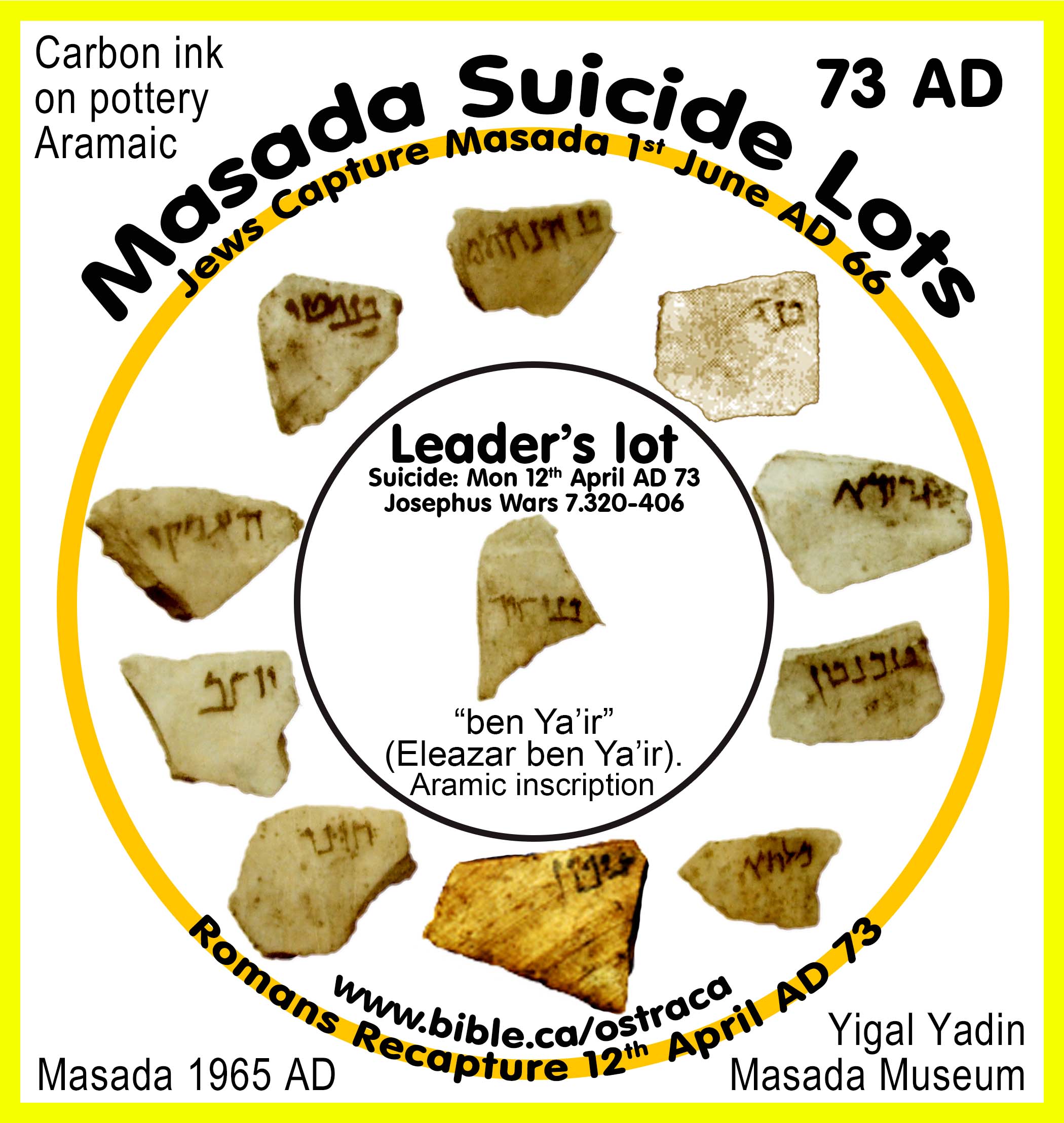
VI. Aramaic was the working language of the Jerusalem Temple priests:
- This was the first Temple of YHWH outside Judea: Elephantine in 530 BC
- History of the Elephantine Temple:
- The Jewish fortress of Elephantine likely dates back to Manasseh (667 BC) and later fortified by Zedekiah in 593 BC and the based upon all the evidence, the YHWH temple was constructed within 10 years after the decree of Cyrus in 536 BC.
- In 667 BC Manasseh sent troops with 21 other kings under the command of Ashurbanipal's (king of Assyria) campaign against Egypt and Nubia (Ethiopians). It may be at this time Ashurbanipal allowed Manasseh to set up the Jewish military fortress/outpost on Elephantine Island on the southern border of Egypt at Nubia.
- We know from the Elephantine Temple papyri that the temple stood at Elephantine at the time of the Persian ruler Cambyses conquered Egypt in 525 BC.
- With the universal decree of the decree of Cyrus in 536 BC to allow freedom of all religions, it is possible the YHWH temple at Elephantine was started after 536 BC.
- The Jerusalem temple was started in 531 BC but not completed until 516 BC because of hindrances and delays.
- At elephantine they had no security issues and could immediately commence building the temple.
- The Jewish Elephantine temple was a simple "tabernacle of Moses" architectural design that would require a perimeter wall and a few interior walls. Such a simple structure could be built quickly.
- The Jewish temple at Elephantine Egypt communicated with the administrators of the Jerusalem temple in Aramaic not Hebrew:
- The famous 35 Aramaic “Elephantine Papyrus” (495 - 399 BC ) were found at the ancient Jewish military outpost and colony at Elephantine Island, on the Nile, at the on the southern border between Egypt and Nubia.
|
The Septuagint LXX “Scripture Cannot Be Broken” |
|||||
|
Start Here: Master Introduction and Index |
|||||
|
Six Bible Manuscripts |
|||||
|
1446 BC Sinai Text (ST) |
1050 BC Samuel’s Text (SNT) |
623 BC Samaritan (SP) |
458 BC Ezra’s Text (XIV) |
282 BC Septuagint (LXX) |
160 AD Masoretic (MT) |
|
Research Tools |
|||||
|
Steve Rudd, November 2017 AD: Contact the author for comments, input or corrections |
|||||
By Steve Rudd: November 2017: Contact the author for comments, input or corrections.
Go to: Main Bible Manuscripts Page
